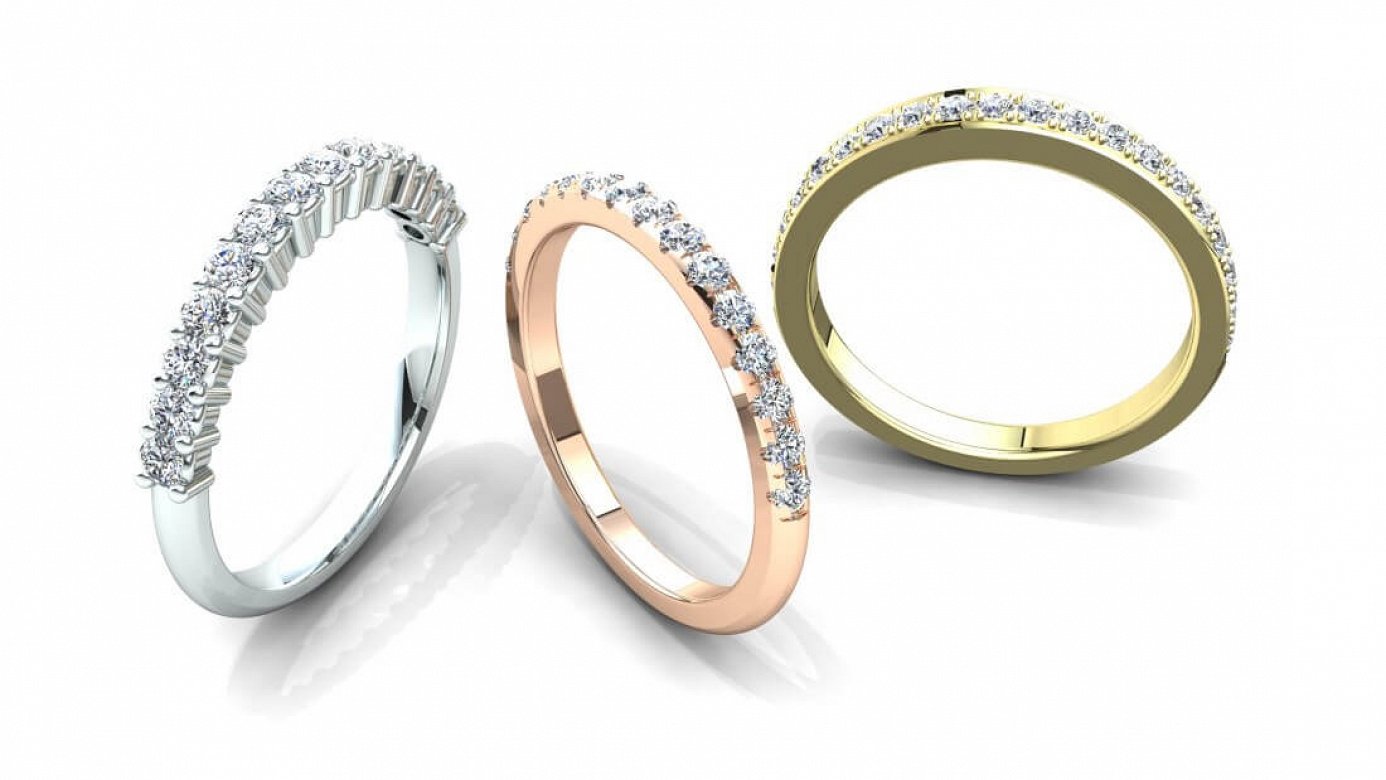
The most romantic and expressive day for each of us will be accompanied with a Wedding Ring, helping the groom to express his feelings, showing commitment, love, and respect for your second half. Various types of designs and patterns, sophisticated models will direct you towards the right choice, choosing the best one for both of you. As a sign of forever love and commitment, your attention should stuck not just with a design but with a settings and other significant peculiarities, being emphasized in the article.
Couples have different tastes when it comes to designing their wedding bands. While some will be comfortable with a simple wedding band design, others will be looking for something that’s a bit more elaborate and flamboyant. When it comes to choosing the metal for the wedding band, you will have quite a few options. The following are some of the popular metals that are used for designing wedding bands.
This is one of the most sought-after metals for wedding bands and for a good reason. Platinum is by far the best metal in terms of durability and appearance. That’s the reason why platinum is more expensive than other metals. Platinum can also be worked into many different designs, which is one of the reasons why people choose it while designing their wedding bands. Apart from that, platinum also happens to be a hypoallergenic, which means it rarely tarnishes and does not need a rhodium plate.
Gold is another popular option for wedding bands. When choosing gold wedding bands, it is important to note that white gold rings need a new rhodium plate every one or two years so that they can maintain their shine. White gold can also cause allergies, especially in those people with nickel allergies. If you want to have a two-tone customized wedding band, then going with yellow gold and rose gold usually makes a terrific combination. When it comes to the durability of the gold, you should always go with 18k gold for designing custom wedding bands. While lower karat gold works fine for custom wedding bands, a higher karat will hold up better over time.
If you choose to go with sterling silver for a custom wedding band, then you need to know that it is not going to be nearly as durable as gold or platinum. In fact, it will require special attention in order to maintain its flawless appearance. However, sterling silver can be a good choice if you are on a budget. Sterling silver is a great option for those who want to have intricate designs on their custom wedding bands.
When it comes to getting a custom wedding band, palladium is another great choice. It is considered to be a bit durable than other precious metals and can be worked into a number of styles. Palladium is also a hypoallergenic and does not need a rhodium plate. Another feature of palladium is that it is lighter when compared to gold and platinum with the only downside being that this metal is sometimes difficult to find. The above mentioned metals are all great choices for customized wedding bands that feature intricate designs, filigree, and other more elaborate designs.
There are many options for ring settings as well. Choosing the right wedding ring setting is important since it can make or break the ring’s appearance. The following are some options.
Channel setting involves two long tracks of the precious metal that’s used to hold a row of gemstones together side-by-side.
Bezel is, the easiest way of setting gemstones into elaborate jewelry. In a bezel setting, the gemstone is usually surrounded by a thin and flat piece of metal that helps keep the gemstone in place.
The word pave means “paved.” Wedding bands with a pave setting usually have a central gemstone which is encircled by other smaller gems. These gemstones are usually diamonds, so the style of setting is considered to be a more flamboyant and expensive option.
Those who don’t have deep pockets can still create a fancy custom wedding band by using the micro pave setting method. As the name implies, a micro pave method uses little gemstones that are set closely together.
The prong setting is more popular for wedding and engagement rings. Stones that are fashioned in this particular method show more of a sparkle since they are not surrounded by a thin metal strip. Instead, a prong setting uses four or six small claws or prongs to raise the gemstone while keeping it in place. Shared Prong In this setting, adjacent diamonds share the prongs which means less metal is used in the making of the wedding band. This makes it possible to fit in more diamonds to the ring. Halo In the halo setting, a large single stone is encircled by several smaller precious stones, which creates the illusion that the center stone is larger than it really is. This also adds to more sparkle to the wedding ring
In a cluster setting, several smaller diamonds or other precious stones flank the larger gemstone. The cluster-style is a more elaborate method of designing a wedding band or an engagement ring.
The bar method of setting wedding bands is one of the most common setting styles for wedding bands. The bar setting uses metal bars that separate each stone around the entire ring.